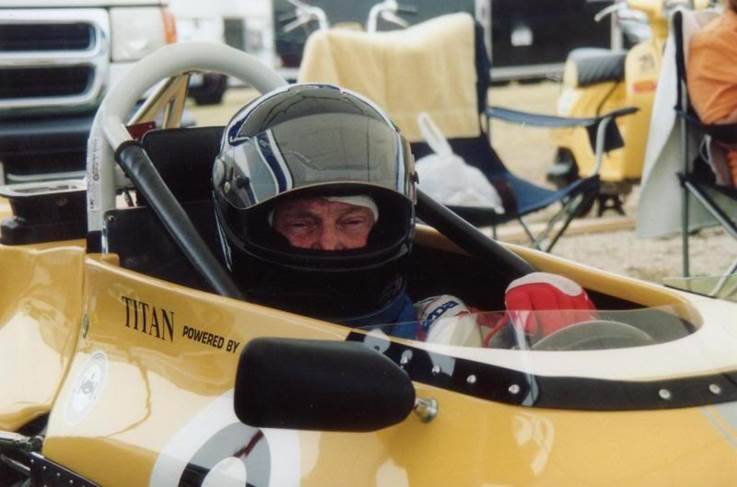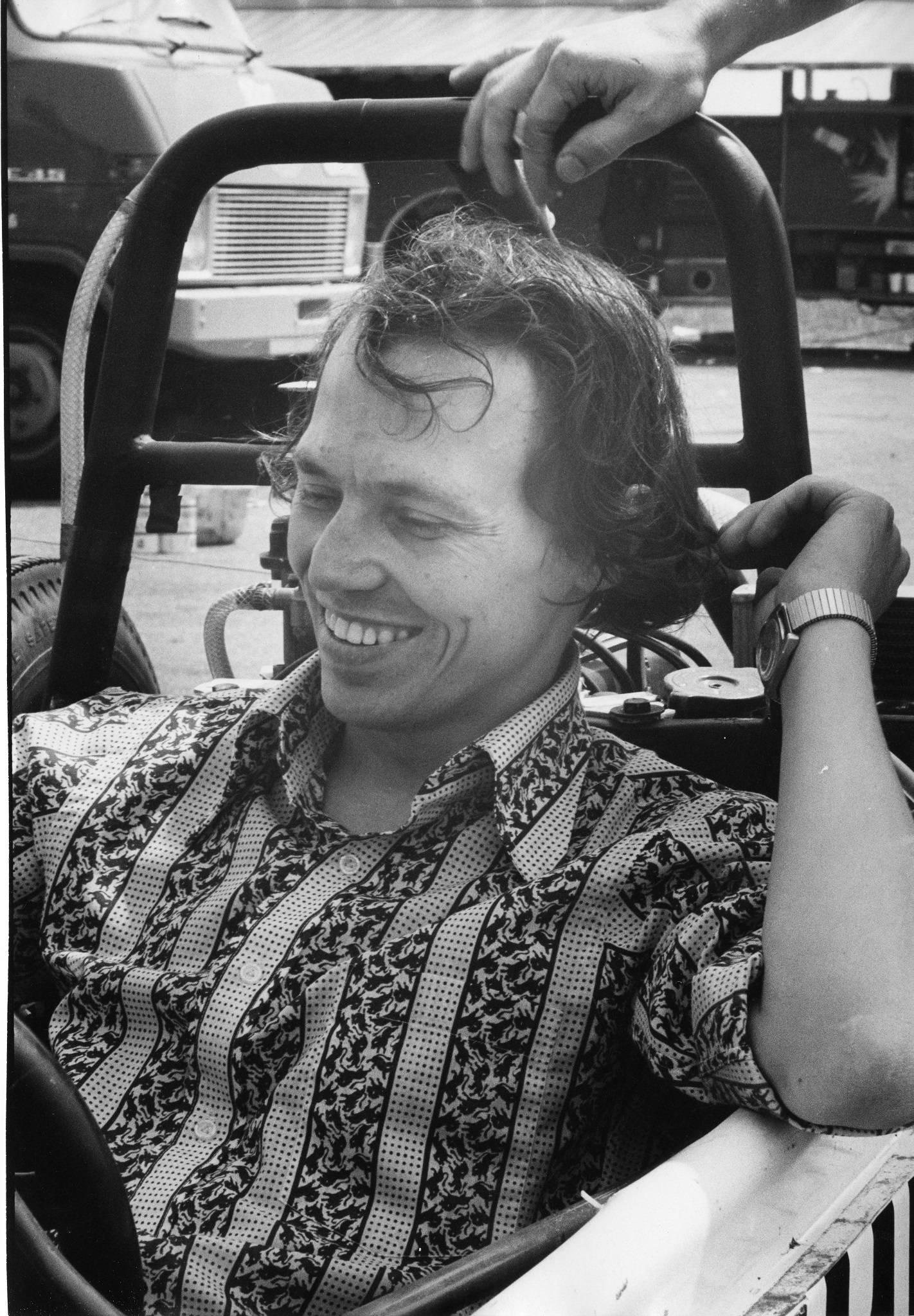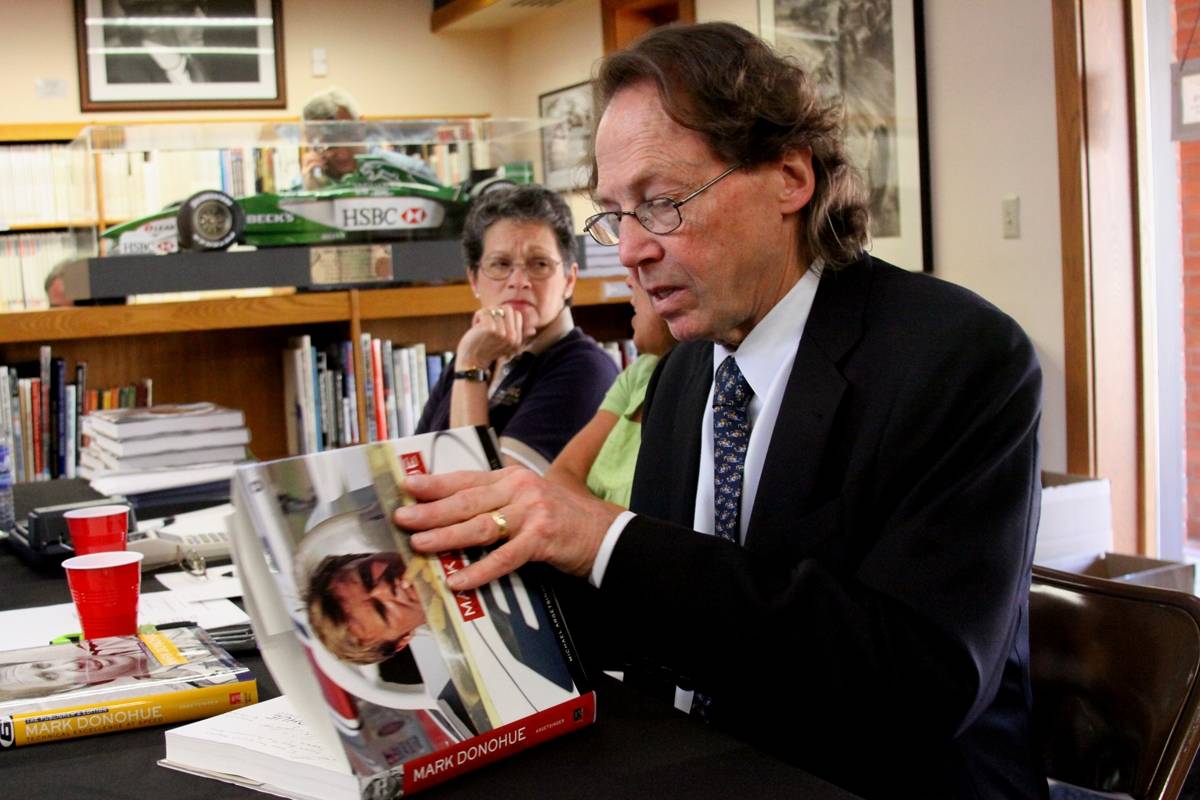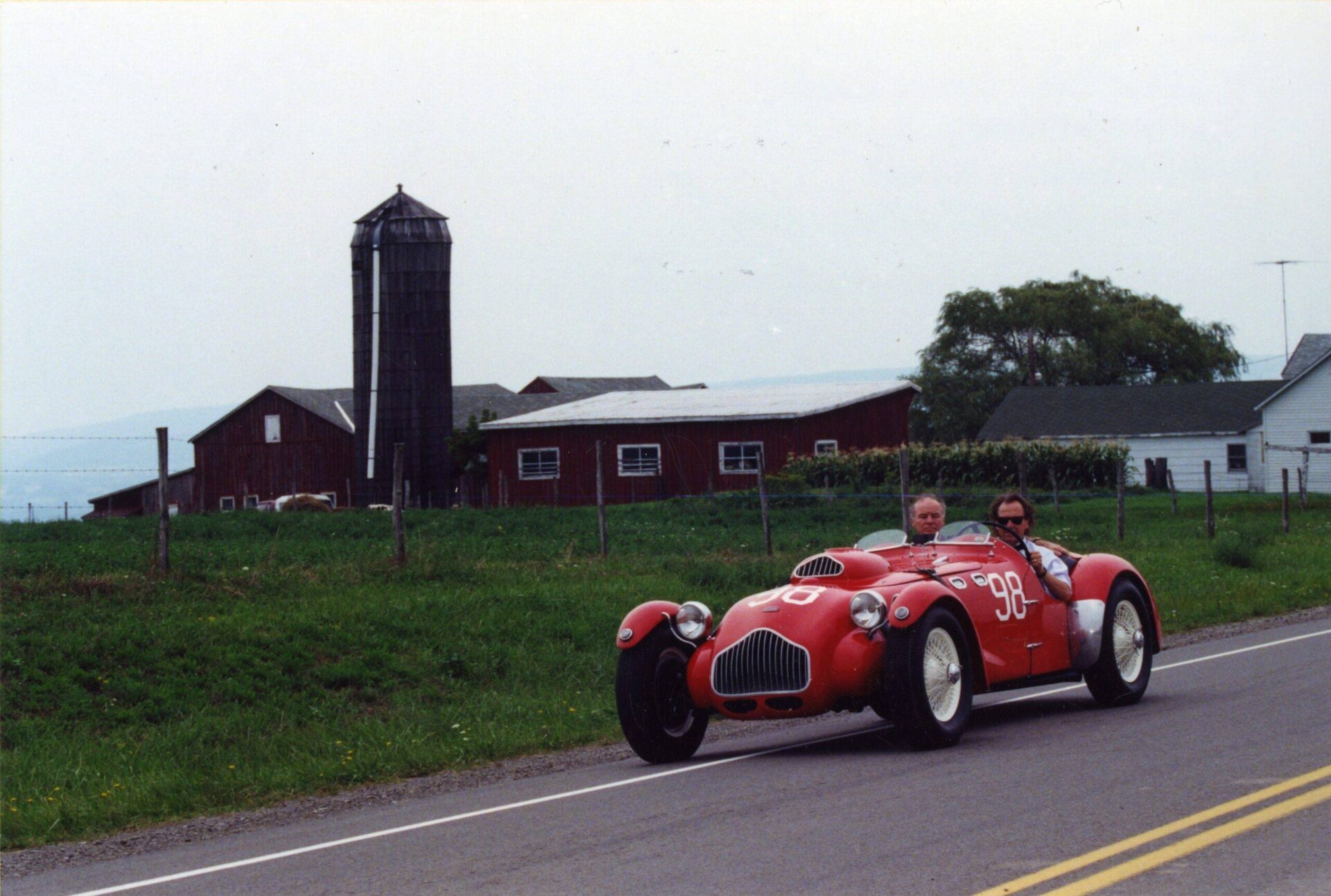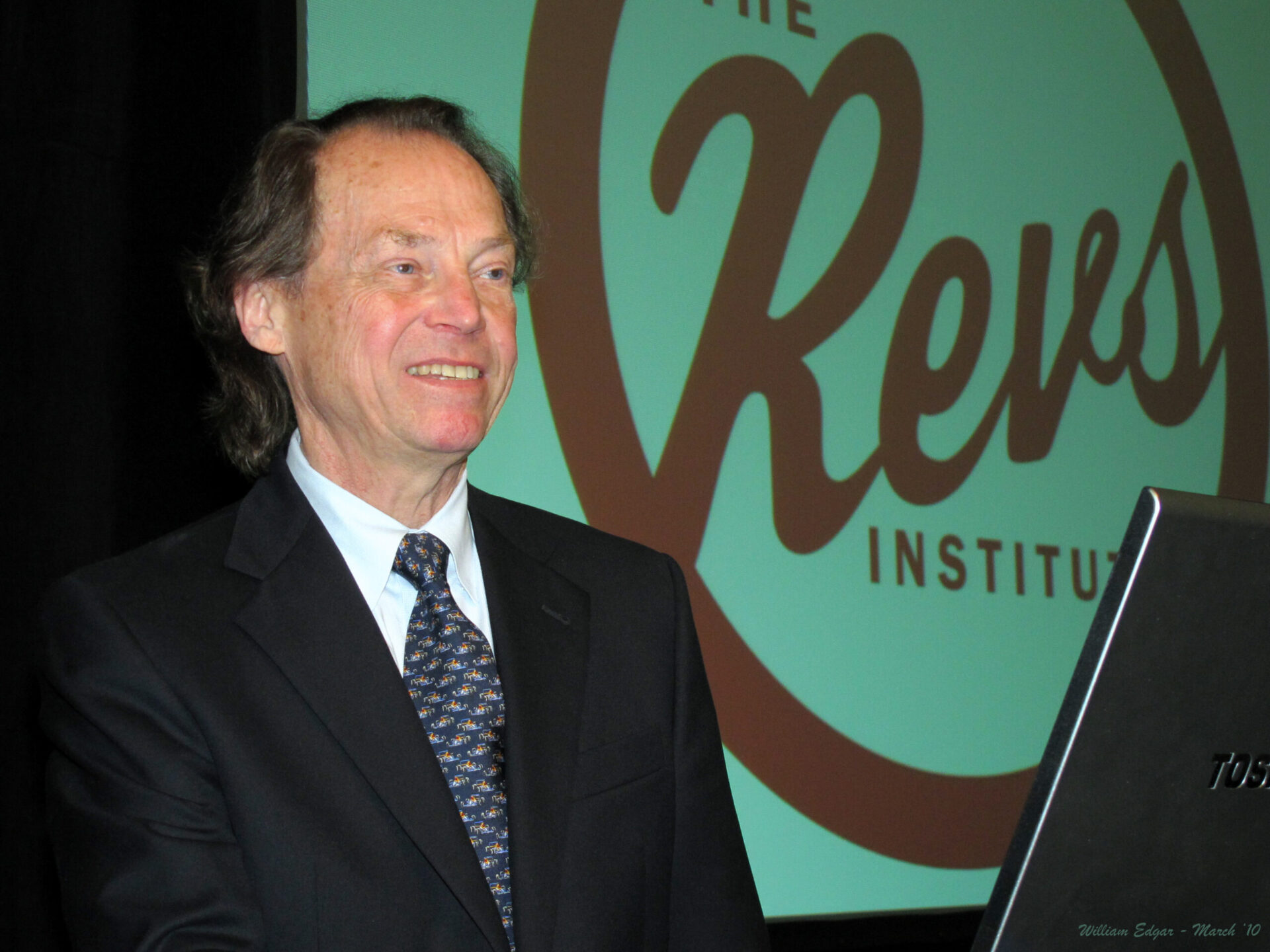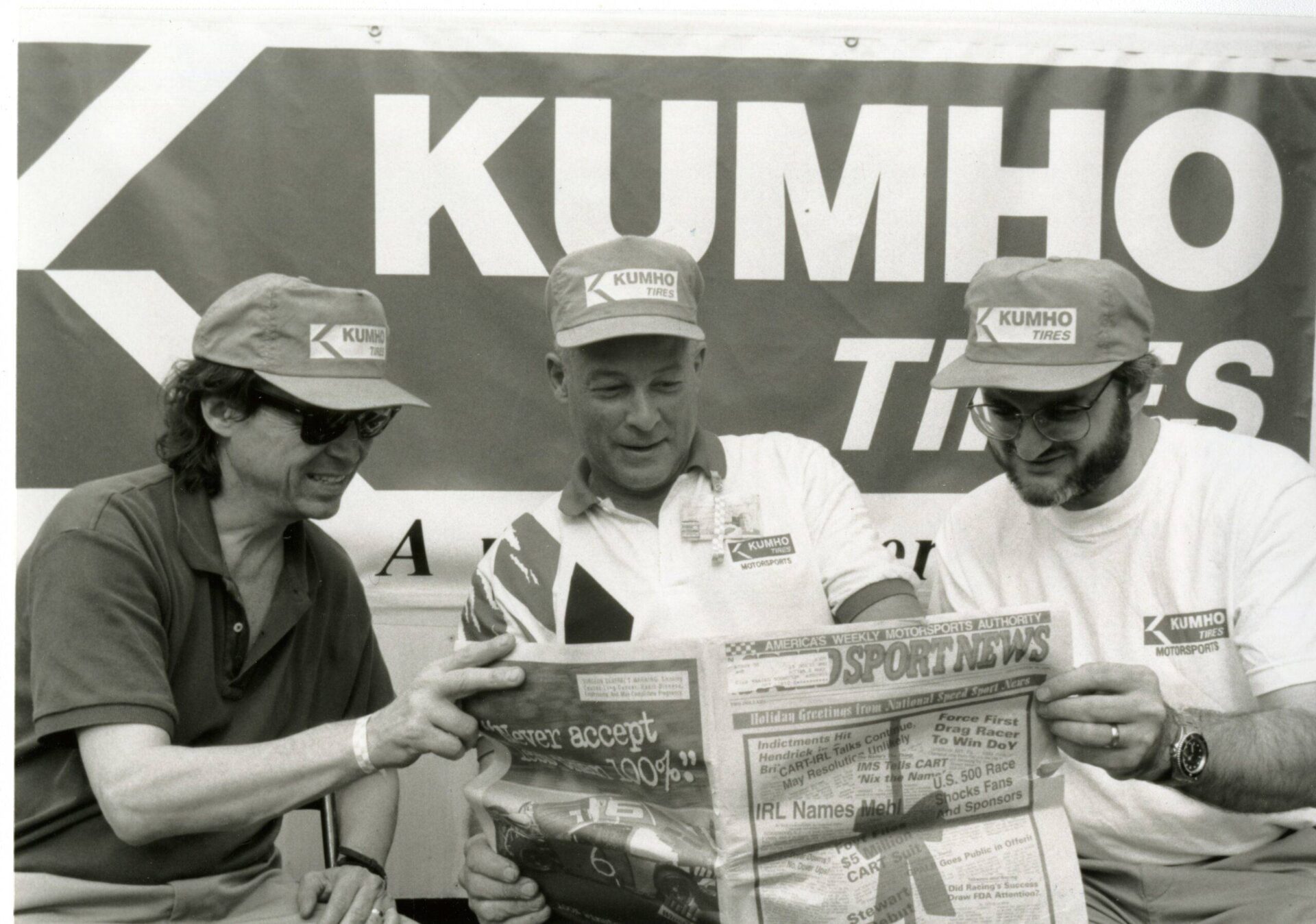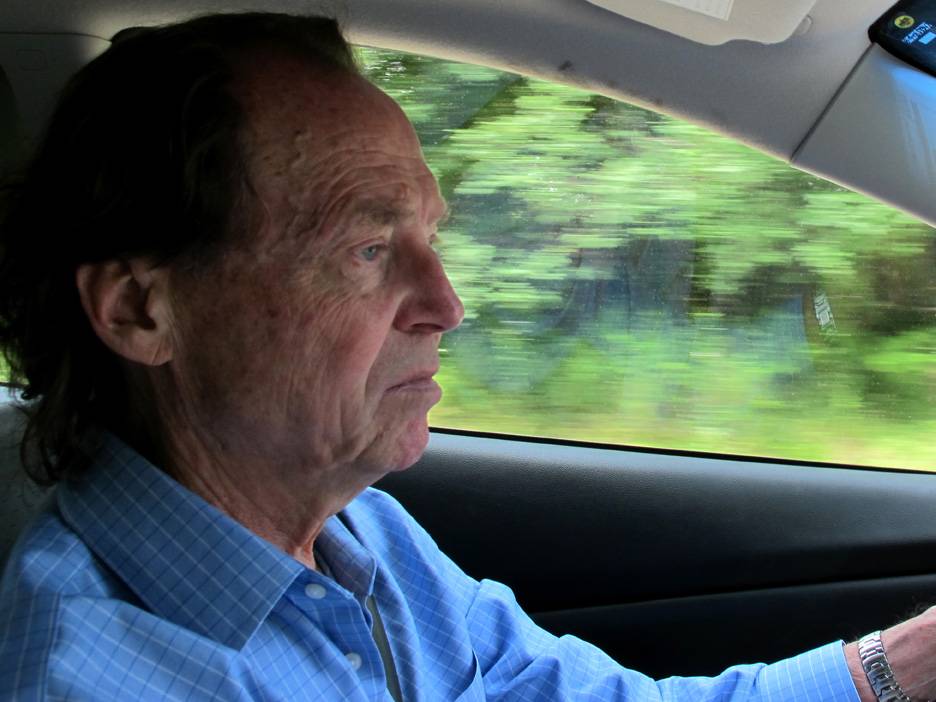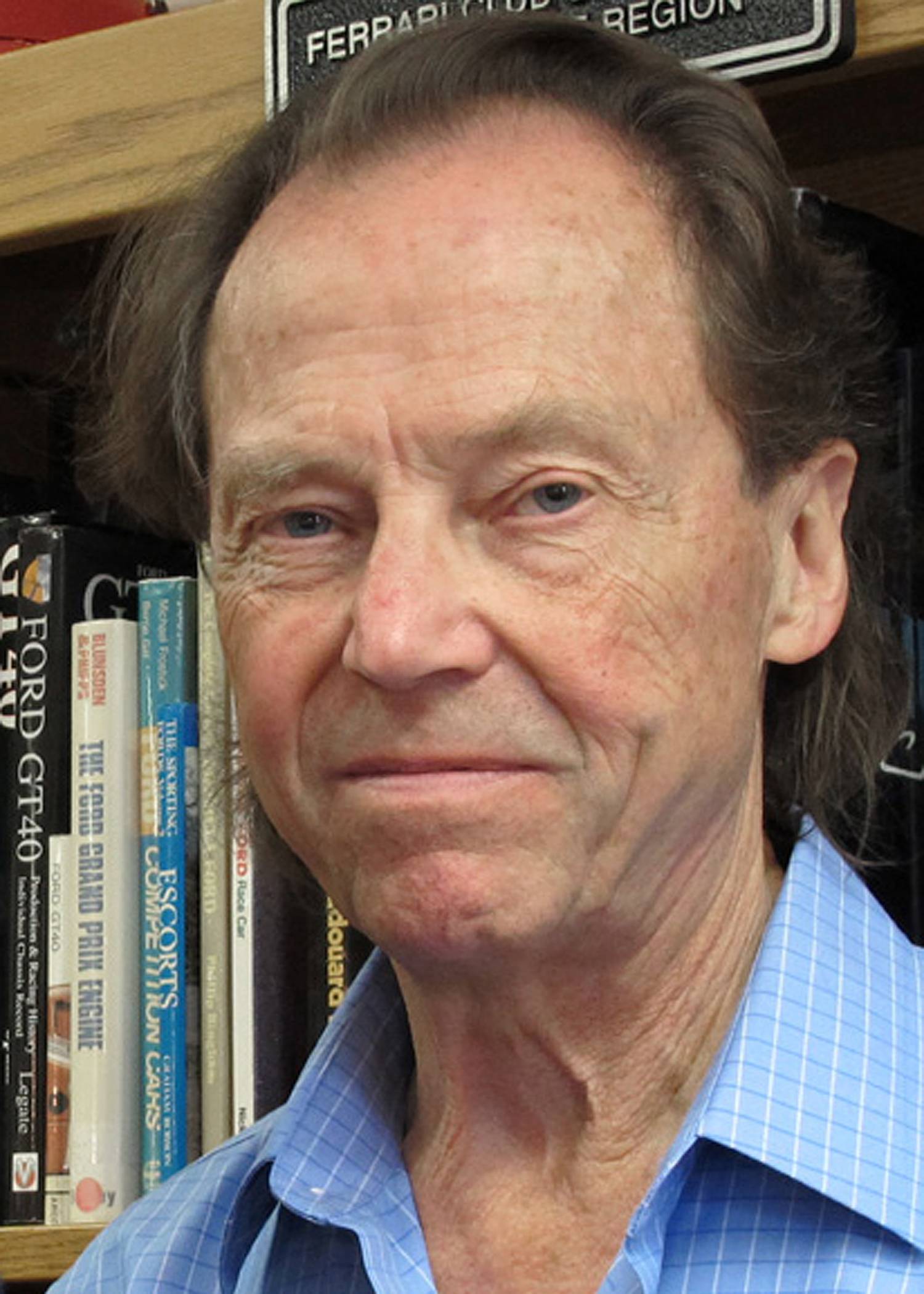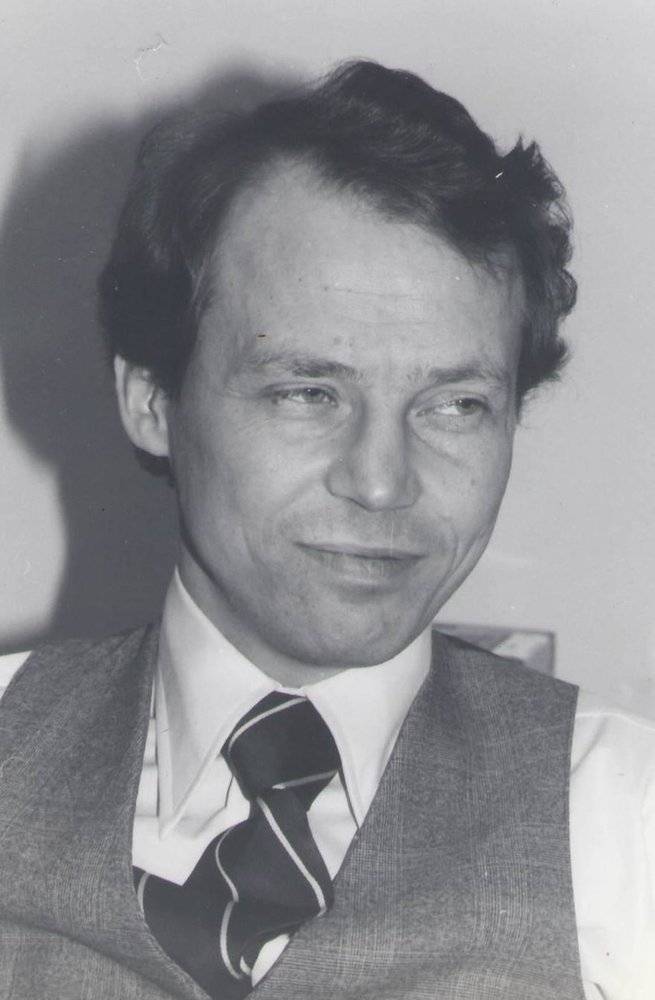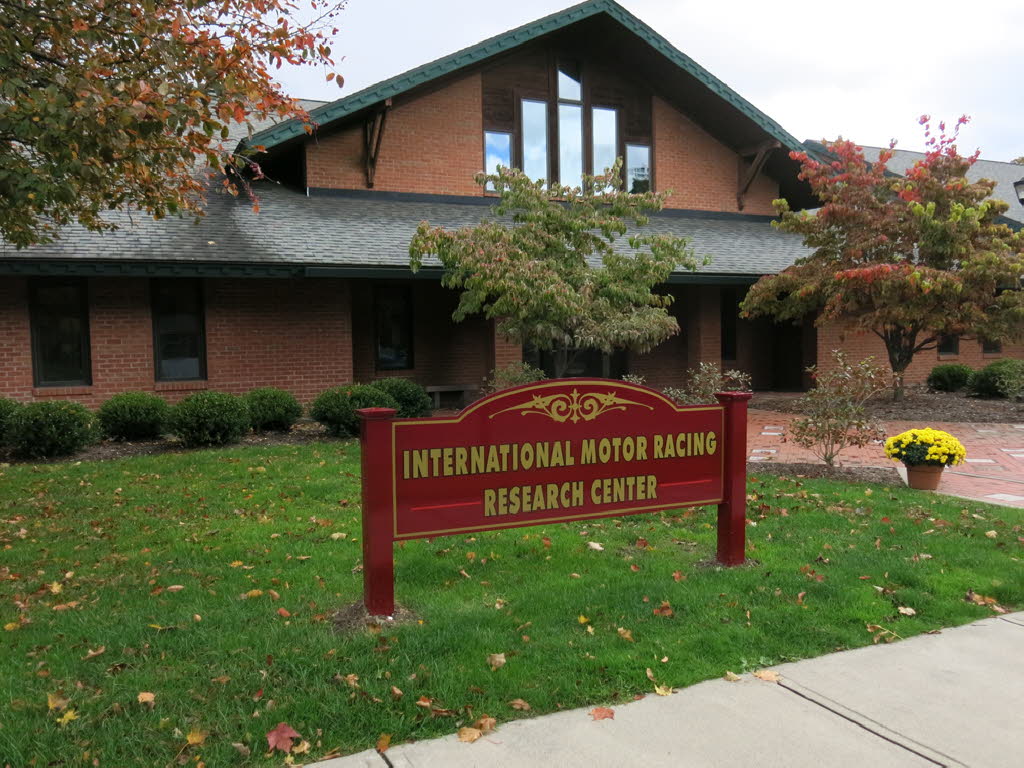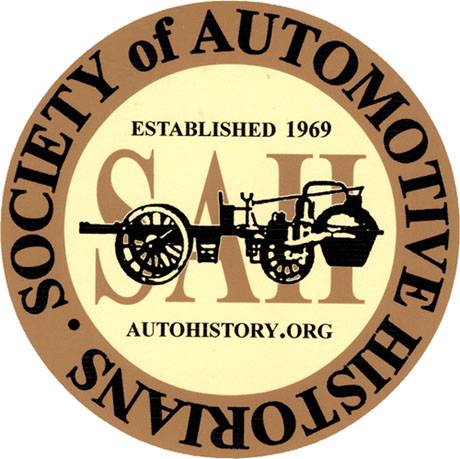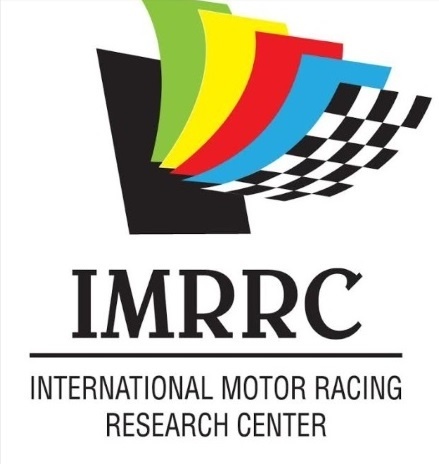Having a strong interest and deep passion for car racing, Dr. Mario Felice Tecce analyzed Formula One seasons of the last 50 years and suggests that race car driving can be a major example of general life choices between good and bad in a joint competition to pursue the best possible.
Bio
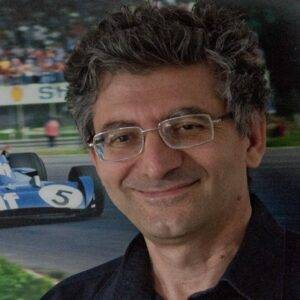
Dr. Tecce received his M.D. and PhD. at the University of Naples, Italy, and is currently full profession of biochemistry at University of Salerno. Besides his molecular research about cancer mechanisms, he explored race car driving as a major reference paradigm of pursuing the best and of free will exercise.
Notes
Transcript
[00:00:00] Break/Fix’s History of Motorsports series is brought to you in part by the International Motor Racing Research Center, as well as the Society of Automotive Historians, the Watkins Glen Area Chamber of Commerce, and the Argettsinger family. Racing is a paradigm for pursuing the best. By Mario Felice Tecce, Dr.
Tecce received his M. D. and Ph. D. at the University of Naples in Italy, and is currently full professor of biochemistry at the University of Salerno. Besides his molecular research about cancer mechanisms, he explored race car driving as a major reference paradigm of pursuing the best end of free will exercise.
Having a strong interest and deep passion for car racing, he analyzed Formula One seasons of the last 50 years and suggests that race car driving can be a major example of general life choices between good and bad in a joint competition to pursue the best possible. Ladies and gentlemen, the next presentation that [00:01:00] is up is Mario Tecchi from Naples, Italy, joining us remotely from Naples.
And his presentation is Racing as a Paradigm for Pursuing the Best. Mario, it’s all yours. Thank you very much. Thank you, Bob. And actually, I have to say that good morning to everybody. That is very, very nice for me to be here, even if in a remote connection. And I want to thank you, Bob, and Duke, uh, Geta Singer, and, uh, Paul Baxter, but also all other organizers for allowing me to be here.
I’m going to talk to you about race car driving and how this activity can be an example of doing good. But before starting, I would just like to show a picture of where I work, and here is my teaching building at my university, and I’m proud to show you that the name of the building is F1. So you can see I’m very, very happy to work in a place which is called F1, even if it is just a [00:02:00] numbering of our building.
But they like to think that it’s because I’m a Formula One NTSS. Now coming to the team, I’m going to try to analyze, we do race car driving, mostly race car driving and driving. Race car driving is something which is made of two things, car development and driving. Obviously during a race, the most important thing is driving.
But before that, even the human action of car development is important. The point is, uh, to talk about driving and try to demonstrate that this is a positive activity. To do that, I will try to answer essentially three different questions. First of all, what is race driving? Is driving getting obsolete? And finally, if driving is something good or bad.
Starting from that, I like to use this image. You see this image, it’s racing in the 60s. Actually, it’s a picture taken from a movie, Grand Prix. Looking at this [00:03:00] image, I also like to remember the last driver which used leather clothes. And this, this was… Francois Savert, and actually I like to remember him even because he won in Watkins Glen in 1971.
Also, we have to remember that he died in the same track two years later. So even this example. Give us the idea that racing is something that should be, can be very nice when you think about winning over the driver, but also something which is connected to the debt. So this is something which sometime there was question about the value of racing.
Racing was something good or bad, but let’s go to the first question. What is driving? We can say that driving generally, even beyond car driving, is An effort achieve a particular objective, and when it’s done implies making choices [00:04:00] before. While it is car driving will be steering, braking, accelerating, but when has to decide when and how to steer, when and how to break.
So it’s making a choice and then acting. In general, human activities is done of choices and action, and they can be good or bad. The same can be for driving. I would like to say that driving is just an occasion within our life to be good and to do good. And then we have to evaluate if this, uh, is like that, if it is good or if it is not.
Now comparing what it is race car driving versus usual car driving, which is what most of us, most of us are passionate, are enthusiastic about car racing, but most of us just look at car racing. What is the relationship between race car driving and usual car driving? I think it’s just a [00:05:00] quantitative relation.
I mean, the differences are just quantitative. I have a question, which is still from this movie, which I like a lot, I think it’s very, very important in the history of racing. It is Grand Prix from John Frankenheimer, a movie from 1966, which I think influenced what was the perception of racing. Even in the following years, probably even today, there is this character of this movie which, uh, why is it so marvelous to go very fast?
It’s a simple question. It was a character which didn’t know anything about racing. Joe was just plainly asking that. Is it because speed is associated with hazard and violence? And this is something which is often brings the bad judgment about racing, the violence, the danger, the deaths. It is really the goal of racing, what it comes from speed.
Or another possible answer is Speed is marvelous because it can give us a [00:06:00] special feeling of achievement, of doing at best, even if this brings some violence. But this is not the goal. It’s just something which has to be taken, has to be accepted, try to get this special achievement. Race car driving is competition.
Competition obviously is something which you can find in many other aspects of life, but it is. Race is competition. What is competition? Competition is trying to do the best possible using as reference other participants. At competition, I need other racers. I cannot race alone. I need the other racers as reference.
And if we want to remember the origin of this word, the origin is from two Latin words, which are cum eter, which is Searching together for the best. So competition is something which is not doing against others, but together you cannot [00:07:00] do competition. You can race without other racers. Next question, is car driving and also then race car driving become obsolete here?
We will see autonomous vehicles substituting traditional cars. We will likely use cars like now we use elevators. We’re just saying where we want to go and they will do everything for us. What about driving then? Not obsolete, it will be uncommon. Comparison can be made with horse riding. I mean, 100 years ago, every, I mean, most people was riding horses.
Now there are still races about people riding horses, but it is very uncommon to find a person able to ride a horse. So what would happen to race car driving? Probably race car driving will continue, but the difference will be there will not be normal drivers. We will not drive our car. So it will be [00:08:00] difficult to identify ourselves with drivers.
But driving a race car driving will still be an occasion to do something good or bad. So this is our major question. Is race car driving something good or something bad? In the past, especially when big accidents, big, uh, amount of deaths were seen in the races. Now it is more rare because, uh, there is more safety in racing, thanks to all that is more safety.
Some, in the past, race car death was considered very bad. I think, I mean, should finally, I hope to convince you finally that. Driving and race car driving can be good or bad as most human action. There is not a general answer, but everything can be good or bad. And then we go back, I mean, to a major question.
What makes human actions good or bad? Including also racing. [00:09:00] Maybe it’s my hypothesis that doing good is what we do according to our nature. Maybe that we are naturally aimed to do good. To convince you about that, I will try to look to some examples in car racing. The first example from which I want to start is about Gilles Villeneuve, a big racer, champion.
I think it was a very important example of, uh, living to be good and to do good. Always trying to do the best, even exceeding. I have these two images about him. This is a famous picture from a Greek Italian photographer, which is Ercole Colombo. And you see her driving a race in 1981, even trying to to do maybe more than there is possible, always trying to do the best.
He was not a crazy man, like somebody was saying. He was just always trying to do the best, even if it was very difficult, even if [00:10:00] his car was not adequate. And then on the right, you see his fatal accident in 1982. His life, his way of living, his way of racing. His personality is an example of somebody believing that the goal of life is firstly to do good.
And I think this, this is an example of faith. Faith in the goal of life, which is an example of faith and remembering, talking to an audience in Watkins, I cannot skip to remember, is a special win in 1979 in Watkins. He was first, he won, more importantly, he did an incredible driving that weekend, on the Friday of that weekend, of the race weekend.
He was nine seconds faster than anyone else, and this is, it was an awful day, very bad weather, but he still tried and he did the best. He was nine seconds faster is something, even on that three [00:11:00] times, very special. This was obviously including his, uh, teammate George Sch, who just won the, the championship in that tier, and might be a way to show that possibly he deserved more than him the championship, but it was, uh, a special nine and didn’t challenge his teammate, uh, on the, on the tier.
And now, looking to this Ferrari of 1979, I cannot forget Enzo Ferrari. He is the man who was able to build chassis and engines from the beginning of 60 for almost 30 years. A very, very special man. who left us, but is still with us. I mean, in our thoughts, looking to do good, be good. I want to remember what allows us to do good.
And these are the fundamental virtues. First of all, virtues can be defined as usual and stable disposition. I will show you that we can [00:12:00] easily, often recognize them in race car driving. There are seven. They are the three major virtues, which are faith, Hope and love, which are the most important, allowing to select the goals of life, which are the first to be used in the stream.
But then, to realize our goals, we need these cardinal virtues, which are four. Prudence. justice, fortitude, and temperance. Let’s start from faith, hope, and love. The first example I want to show you is a very special man, Bruce McLaren, a very special driver, but also one driver who was also able to win with a car built from his factory.
He was both a car constructor and a special driver. And I want to show you the Which he pronounced in this ology of the steam. We [00:13:00] died in May in 1964. Who is to say that he had not seen more, done more and learned more in his 26 years than many people do in a lifetime. I feel that life is measured in achievement, not in years alone.
I like this way to celebrate. He was losing a friend, a teammate, but he was not questioning racing. And I think this is an example of determination to win, even taking every risks. Even of dying, but this doesn’t mean to be, to have a complete unawareness of life values. I don’t consider people like him very because he died a few years later.
He was not a crazy man because he was taking risks. It doesn’t mean that he didn’t realize that he would die or didn’t give value to his life. It was just that he was looking to this major goal, to do good. This is the [00:14:00] starting read in, in 1994, he was going to die a few minutes after the start. And, uh, it was a very sad weekend.
The day before another driver, Roland Lux Arzenberger, died in the same track. He was there and he was, uh, still determined to race, uh, determination to win. Together with this image, I like to show this other image of 1993, the day before in Donington, where he did, uh, probably the most important first lap of race, an incredible lap.
He overtook a lot of other cars, won races, and his car was not, absolutely not the best car. He was a special driver, and he had faith in the idea that he had to do good, to do the best. Switching to hope, the first example I want to give you is very recently, a special and recent driver, Lewis Hamilton.
Still choosing to go do anyway. I, I like to [00:15:00] remember still in the United States, 2015, US pre Prix in Austin, actually it won the race, but this was the final rat session. The, the, the weather was whole food that day. It was very, very difficult and it was still. The fastest and much more than any other trying to do the best and not having any fear and doing it way to talk about hope, but more than that, the major example of hope that they want to show you is this, this other Formula One driver Gunnar Nilsson, a Swedish driver, he was driving for Lotus team in 1976 and 1977.
He was a very good driver. He was able to win a Grand Prix in 1977 and probably was going to have a very good career. But sadly, his career was stopped from cancer. Very, very active in starting a Cancer Research [00:16:00] Foundation, which is still acting now. He wasn’t able to drive. He wasn’t able to win. Actually, he was, uh, Supposedly drive.
In 1978, Lotus 78 was uh, winning Lotus. Actually, this was the, which Mario Andre won the championship. Instead, he dedicated this 1978 to start this Cancer Research Foundation. Uh, somebody say even avoiding therapies to be able to work more on this project. I think this is an example of hope about the major vir.
Now the third one to talk about is love, and now I want to talk about Jackie Stewart. Jackie Stewart is, uh, three times World Championship and uh, there is no, not that much to say about him. He is a very famous, very well-known very well special driver. I just want to remember year, the year 1973 where he won his third championship with Hero and there is in months and was an incredible day for him.
He was supposed to [00:17:00] easily win his championship because he needed just a few points, but he had a puncture. He had a puncture and at that time this was not a usual thing to stop or tire change. He exited from the pits as last. And then did an incredible driving and was finally making a lot of overtakes driving in a very incredible way, he was able to finish fourth and win the championship was an incredible still remember that day.
This is 73. Now another picture of him is, uh, many, many years later in the 2019 is still here. Another blue car. This is not the theater, this is the MA track by which he won the championship in 1969. There are two other cars with the songs following him, which are the two cars by which we won the other two championship you see here, stops in the surf with festival.
He stop the scar. Two images, which are. related to the same person. [00:18:00] They’re very similar. They’re very related. In both occasions, he’s doing his best to do good, to be good and to do good. Finally, now I want to talk of the other four Virtues still in racing and to talk about these four other cardinal virtues to get the fastest possible lap time in Monza.
This is the track of Monza and it is the start finish line. Let’s start look just to get to this start finish and start a good lap. We have to make the best possible way, the curva parabolica, the parabolic turn, it’s also called the alboreto turn, to remember the other big driver. To do the best parabolica, we need prudence.
What is prudence? It is the virtue to distinguish true good in every situation of making the right choices. It is not fear. It is not [00:19:00] diffidence. How can you use prudence here? To choose the best measure of braking and accelerating. This is a term which opens gradually. So, it has to be started, obviously, braking before the turn, but then gradually accelerating.
So, it has to be continually, potentially adjusted, the right braking and the right acceleration. So, to do this at best, we need prudence. Then, going to the start finish straight, and then we are now getting to the start finish line, we need justice. This is a portion of the track where the driving ability is not very important, only the power of the engine is giving you the highest speed, but now it is important to prevent any risk.
I mean, there are a lot of rules to can overtake, especially in these days, but before any rule, there [00:20:00] is the justice to be used. What is justice? It is the determination to respect the rights of those that have relationship with us. So, a driver in this point of the track has to consider either overtaking or defending the position to prevent any risk, and this is the need for just justice.
Then we reach the first chicane. First chicane is a point where there is a very big braking to be done from about 340 km per hour, which is 210 miles, to about 80, which is about 50 miles per hour. So a very big braking obviously has to be done correctly because getting through this chicane there is this curva grande, which is done essentially as a straight, and so it is important to make it at the best, at the highest possible speed.
Then to do this braking at the [00:21:00] best we need fortitude, which is the virtue that guarantees determination in difficulties. Trying to do good. We lose that to wait the right moment to break are very, very hard to change the spin. And then going over again, the next two important points of the track, do we get to this variant of the La Roja and then to the Lesmo cars again, going through the variant of La Roja, we need fortitude again to properly break and then get to the Lesmo course in the.
best possible time. Again, Lesmo tires need cadence, because they are very fast, these two brands, these two Lesmo tires, and only moderate braking is necessary to get at the fastest possible speed to the next straight, which is bringing us to the Variante Ascari. Here, the [00:22:00] virtue which is important is temperance.
What is temperance? It is the virtue that moderates wishes and provides an appropriate balance using goods. Here, it is important to moderate the impulse of overspeeding. Why? Because, uh, I mean, this is a very fast track. Old, old Munza track is a very fast track, but at this point, the risk is to enter at a too high speed.
Entering at a too high speed in this, uh, Varianta Scala essentially have three different turns, left and right and left turns, and then entering at a too high speed makes you exit too slow. So it is necessary to moderate wishes, I mean, to moderate the impulse of overspeeding to get again to the next state, which brings again to the parabolica to complete our lab.
So, during the, uh, Monza lap, we needed [00:23:00] all the four cardinal virtues. Concluding our, my speech, I hope to have given you some ideas, uh, about, uh, the fact that driving in the fastest way, driving in, uh, racing, is a possible way to live to be good and to good, at best. And then this means also properly targeting the future, but the point is, uh, living to be good and to do good is the goal of life.
I mean, the goal of our life is this, I, this is my idea. Obviously, this is a personal, I can just give you some other examples of this way of thinking and they will use the words of, uh. In his given comedy. When Alexis ask his fellows not to miss the chance to explore the unknown world to go over and, uh, I read the words where are original Italian words, but they, I will read you [00:24:00] English translation and this are considered the seed that gave you birth.
You are not made to live as but to be followers of. And knowledge. So, knowledge. Knowledge is something which comes from the study, from the experience, which allows us, which drives us in our choices. As a last image, again, I would like to indicate you this driver, which is in my heart, is Gilles Villeneuve as an example.
I mean, one of the major examples in tracing of living to do good and to be good. And, uh, giving you a citation which is from St. Paul, a citation which is aimed to everybody but seems particularly fit for racers. And that is, uh, do you not know that the runners in the stadium all run in race, but only one wins the prize?[00:25:00]
Thank you very much for your attention. Thank you, Mario. Thank you very much. This episode is brought to you in part by the International Motor Racing Research Center. Its charter is to collect, share, and preserve the history of motorsports, spanning continents, eras, and race series. The center’s collection embodies the speed, drama, and camaraderie of amateur and professional motor racing throughout the world.
The Center welcomes serious researchers and casual fans alike to share stories of race drivers, race series, and race cars captured on their shelves and walls and brought to life through a regular calendar of public lectures and special events. To learn more about the Center, visit www. racingarchives.
org. This episode is also brought to you by the Society of Automotive Historians. They encourage research into any aspect of automotive history. The SAH actively supports the compilation and preservation of papers. Organizational records, print ephemera and images to safeguard as well as to broaden and deepen the understanding of motorized [00:26:00] wheeled land transportation through the modern age and into the future for more information about the SAH, visit www.
autohistory. org.
We hope you enjoyed another awesome episode of Brake Fix Podcast brought to you by Gran Touring Motorsports. If you’d like to be a guest on the show or get involved, be sure to follow us on all social media platforms at GrandTouringMotorsports. And if you’d like to learn more about the content of this episode, be sure to check out the follow on article at GTMotorsports.
org. We remain a commercial free and no annual fees organization through our sponsors, but also through the generous support of our fans, families, and friends through Patreon. For as little as 2. 50 a month, you can get access to more behind the scenes action, additional Pit Stop minisodes, and other VIP goodies, as well as keeping our team of creators Fed on their strict diet of fig mutants, [00:27:00] gummy bears, and monster.
So consider signing up for Patreon today at www. patreon. com forward slash GT motorsports, and remember without you, none of this would be possible.
Livestream
Learn More
Consider becoming a GTM Patreon Supporter and get behind the scenes content and schwag!
Do you like what you've seen, heard and read? - Don't forget, GTM is fueled by volunteers and remains a no-annual-fee organization, but we still need help to pay to keep the lights on... For as little as $2.50/month you can help us keep the momentum going so we can continue to record, write, edit and broadcast your favorite content. Support GTM today! or make a One Time Donation.
This episode is sponsored in part by: The International Motor Racing Research Center (IMRRC), The Society of Automotive Historians (SAH), The Watkins Glen Area Chamber of Commerce, and the Argetsinger Family – and was recorded in front of a live studio audience.
Other episodes you might enjoy
Sixth Annual Michael R. Argetsinger Symposium on International Motor Racing History

After a hiatus of two years due to the pandemic, the International Motor Racing Research Center (IMRRC), partnering with the Society of Automotive Historians (SAH), presents the Sixth Michael R. Argetsinger Symposium on International Motor Racing History. The Symposium established itself as a unique and respected scholarly forum and has gained a growing audience of students and enthusiasts. It provides an opportunity for scholars, researchers and writers to present their work related to the history of automotive competition and the cultural impact of motor racing. Papers are presented by faculty members, graduate students and independent researchers.
The history of international automotive competition falls within several realms, all of which are welcomed as topics for presentations, including, but not limited to: sports history, cultural studies, public history, political history, the history of technology, sports geography and gender studies, as well as archival studies.
The symposium is named in honor of Michael R. Argetsinger (1944-2015), an award-winning motorsports author and longtime member of the Center’s Governing Council. Michael’s work on motorsports includes:
- Walt Hansgen: His Life and the History of Post-war American Road Racing (2006)
- Mark Donohue: Technical Excellence at Speed (2009)
- Formula One at Watkins Glen: 20 Years of the United States Grand Prix, 1961-1980 (2011)
- An American Racer: Bobby Marshman and the Indianapolis 500 (2019)







































